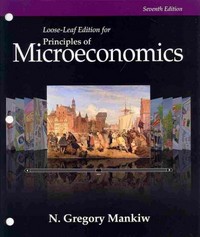60 points Suppose you are in charge of procuring copper supplies for your company's manufacturing process. The net benefit, measured in profits, from a quantity of Q tonnes of copper is 2vQ - M where M is the amount of money paid for the materials. There is only one supplier of copper, Copper Co. You do not know Copper Co.'s cost of production for certain but you suppose that, with probability 0.4, the cost of providing 2 units is 0.1Q (the low cost type) and with probability 0.6, the cost of providing Q units is 0.160 (the high cost type). You decide to offer a menu of contracts: 1. Contract H: Supply quantity Qu for a fee of My 2. Contract L: Supply quantity Qr for a fee of My The idea is to set Qu, M#, Qr, and Mr such that the high cost type of Copper Co. will find contract # more profitable and the low cost type will find contract & more profitable. (Assume that, if Copper Co. is indifferent between the contracts, it chooses the one that corresponds to its type and that it can reject both contracts if both give it negative profits.) (a) Write down profits for the low cost type of Copper Co. and the high cost type of Copper Co when it supplies quantity Q and is paid fee M. (b) Write down the incentive compatibility constraints to ensure that the high cost type of Copper Co. chooses contract H and the low cost type chooses contract L. (c) Write down the participation constraints to ensure that the high cost type of Copper Co. is willing to enter contract # and the low cost type is willing to enter contract L. (d) Write down your firm's expected net profits (in terms of Qu, My, Qr, and ML) assuming that the two types of Copper Co. each chooses the contract designed for it.Now your problem is to choose Q#, M#, Qz, and My to maximize the expected net profits found in the previous part subject to the incentive compatibility and participa- tion constraints. (e) Assume that Qz > Q# and that ICr and PC# hold with equality (i.e. they bind). Use these assumptions to derive lower bounds on your choices for My and My in terms of Qz and QH. 2 (f) Show that when ICr and PC# bind, ICy and PCz are automatically satisfied. (g) Substitute out for My and My, using expressions found in part (e) to express your objective function (expected profits) in terms of Qr and Qx- (h) Write down the first-order conditions for maximization and solve them for Qr and Qw. (Hint: the first order condition sets the derivative of the objective function with respect to Qz and Q# to zero. If f(x) = 2vr then its derivative is f'() = =) (i) Solve for My and My. (j) What is your expected profits from offering this menu of contracts








